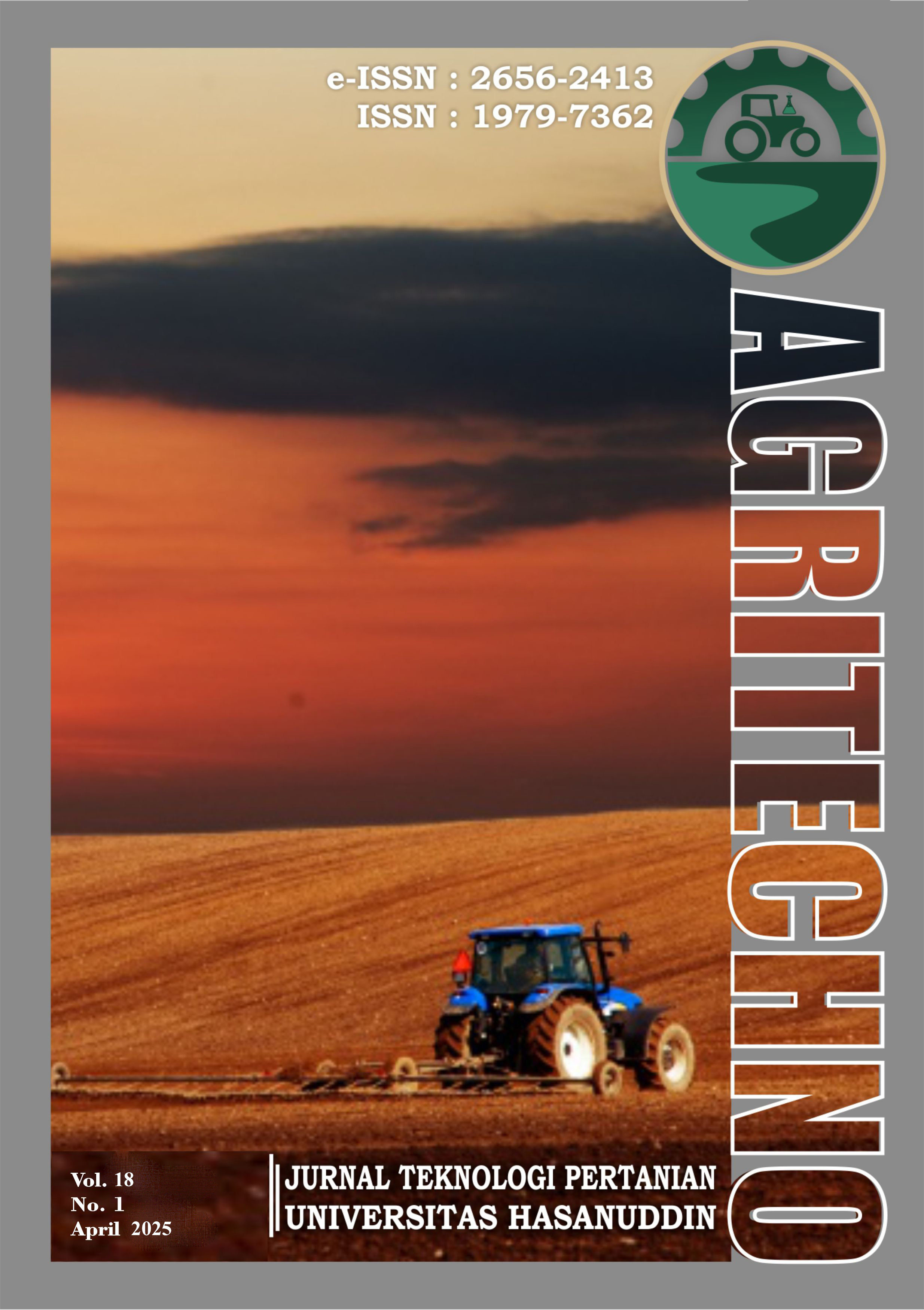PERHITUNGAN NERACA MASSA DAN NERACA ENERGI PADA PRODUKSI ROTI ISI DI BAKERY X JAWA TENGAH
##plugins.themes.academic_pro.article.main##
Abstract
Bread is generally used as an alternative food; not only does it taste delicious, but bread also has the same content as rice so that it can be used as a substitute for rice. Bread is often found in the bakery industry, one of which is bakery X, which produces all kinds of bread, but the most frequently produced is filled bread. The production process of filled bread includes the mixing process, the molding process, the filling process, the proofing process, the baking process, the resting process, and the packing process. In the bakery industry, machines assist the production process, but the efficiency of using raw materials and energy is still being considered. The method used is the calculation of mass balance and energy balance. The results obtained for the mass balance in each process follow the concept of mass balance, namely, the incoming mass of 32.25575 kg must be the same as the outgoing mass of 32.25575 kg, meaning that in the production process of filled bread, there is no reduction in materials that occur. For the energy balance, 3 processes require calculations: the mixing process with an electrical energy source, the proofing process sourced from LPG, and the oven sourced from LPG. The production process with the highest energy consumption is the baking process of 26.3611 kWh. Bakery X can carry out the baking process 8 times using 2 ovens containing 4 trays to produce 754 pieces of filled bread with a weight of 1 piece of filled bread reaching 35 g.
##plugins.themes.academic_pro.article.details##
References
- Adhamatika, A., Brilliantina, A., Sari, E. K. N., Wijaya, R., Triardianto, D., & Sucipto, A. (2023). Analisis Neraca Massa dan Energi Pembuatan Keripik Kentang (Solanum tuberosum L). JUSTER : Jurnal Sains Dan Terapan, 2(1), 69–76.
- Agustina, S. I. A. (2022). Perhitungan Neraca Panas dan Neraca Massa pada Proses Produksi Pelumas di PT. X di Tambun Bekasi. Journal of Engineering Environtmental Energy and Science, 1(2), 83–88.
- Anita, A. (2023). Pemanfaatan Limbah Roti Menjadi Produk Yang Bernilai Guna Menuju Penerapan Circular Economy. Jurnal Ilmiah Teknik, 2(3), 59–68.
- BPS. (2022). Profil Industri Mikro dan Kecil. Badan Pusat Statistik, 1–240.
- Ermawati, D., & Wiyono, A. E. (2022). Analisis Neraca Massa Pada Pembuatan Serbuk Pewarna Alami Daun Sawi (Brassica rapa var. parachinensis L.) (Mas Blance Analysis in Making Natural Coloring Powder for Murtard Leaves (Brassica rapa var. parachinensis L.). JOFE : Journal of Food Engineering | E-ISSN, 1(4), 160.
- Ihsan, A. (2024). Implementasi Lorenzo Terhadap Konsumsi Energi Listrik Pada Sistem Pendingin dan Pencahayaan di Gedung PT . Bank Rakyat Indonesia Kabupaten Padang Pariaman. VUCA: Jurnal Media Teknologi Dan Informasi, 1(1), 1–14.
- Indahsari, I. N., Sutrisno, A., & Ulandari, D. (2024). Evaluasi Karakteristik Roti Komposit Bebas Gluten dengan Konsentrasi Hidrokoloid dan Waktu Proofing yang Berbeda. Jurnal Teknologi Dan Mutu Pangan, 3(1), 31–41.
- Laksmana, R. D., Santoso, E., & Rahayudi, B. (2019). Prediksi Penjualan Roti Menggunakan Metode Exponential Smoothing (Studi Kasus : Harum Bakery). Jurnal Pengembangan Teknologi Informasi Dan Ilmu Komputer, 3(5), 4933–4941.
- Lestario, W. (2017). Potensi Penerapan Konsep Produksi Bersih pada Industri Keramik di Probolinggo. Jurnal Teknologi Lingkungan, 18(2), 192–199.
- Nadya, N., Sani, N. M., & Puspitasari, A. (2023). Pengaruh Lama Waktu Kontak terhadap Kinerja Trickling Filter Dalam Menurunkan Kandungan Bahan Organik Limbah Cair Industri Roti. Maiyah, 2(2), 99.
- Singapurwa, N. M. A. S., Semariyani, A. A. M., Candra, I. P., Rudianta, I. N., & Arandini, P. C. A. (2022). The Application of HACCP (Hazard Analysis Critical Control Point) in Croissant Production Process in CV. P-RS – Bali. AJARCDE (Asian Journal of Applied Research for Community Development and Empowerment), 6(2), 1–8.





